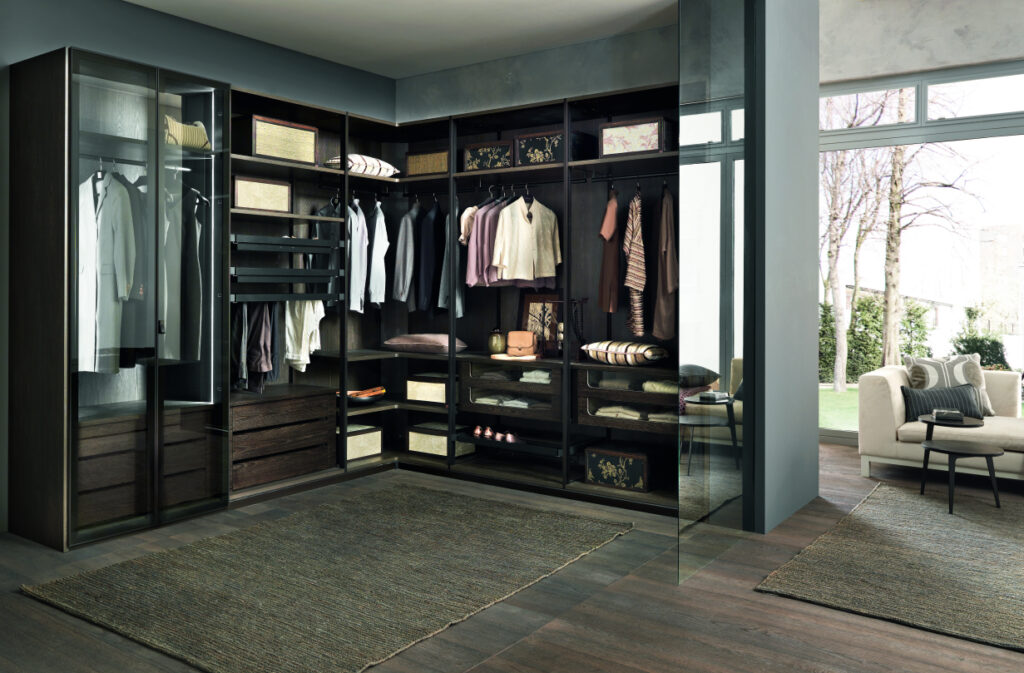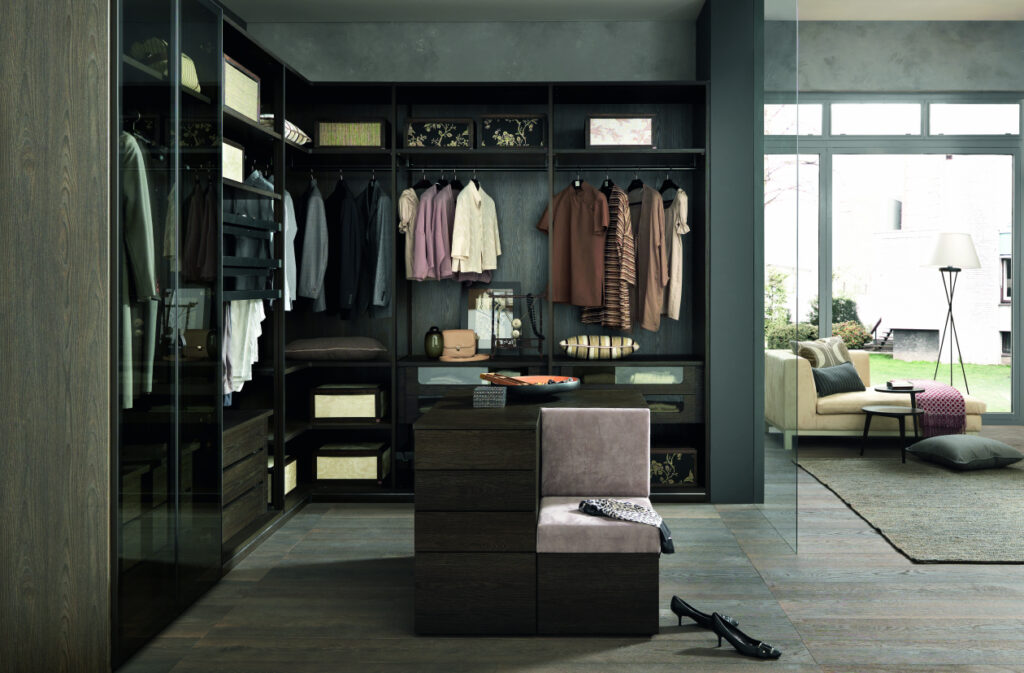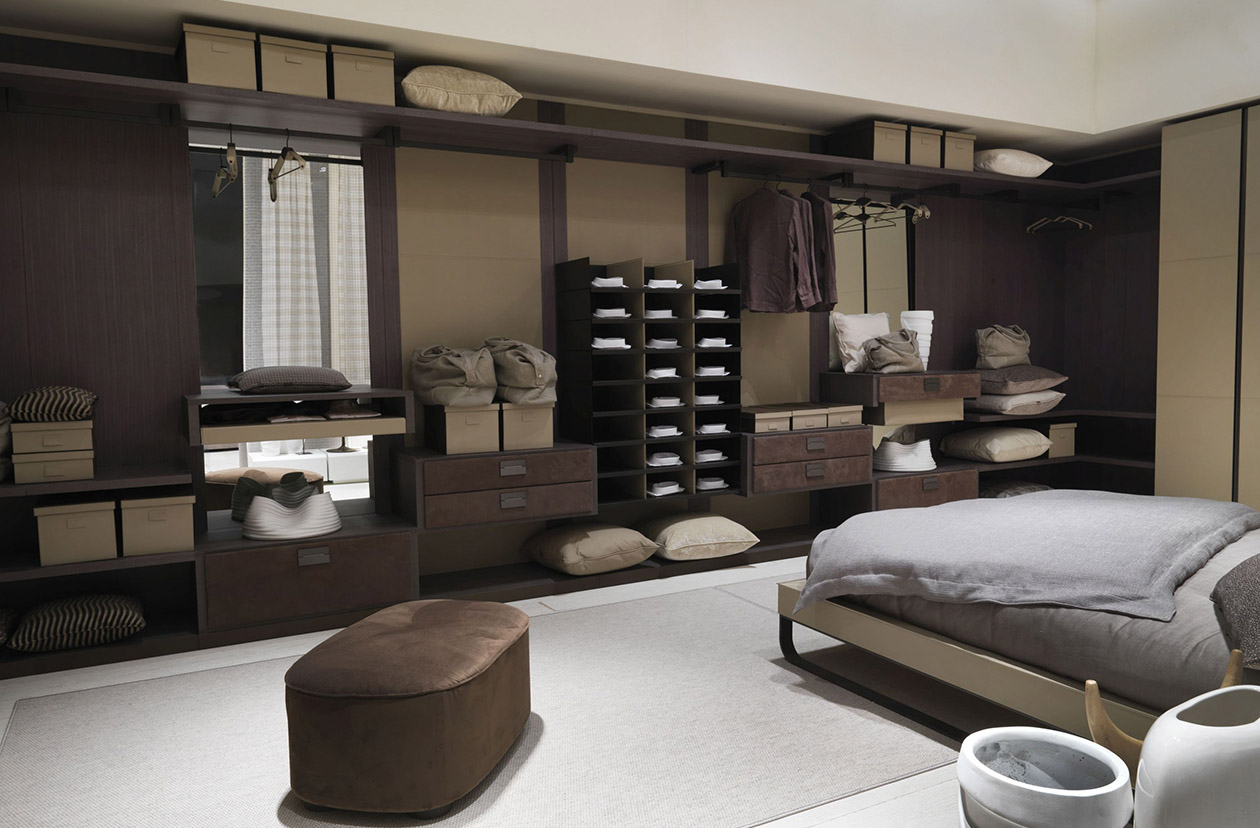After two decades in the design world and countless editorial shoots in the world’s most stunning homes, I can tell you this: the closet has evolved from a mere storage space into the ultimate design statement. As we move through 2025, I’m witnessing an unprecedented elevation in how we approach personal storage – and frankly, it’s about time.
The discerning homeowner today understands that exceptional design extends beyond the living room and into every corner of their sanctuary. Let me share what’s defining luxury storage in 2025 and how you can achieve editorial-worthy results in your own space.
The Hierarchy of Sophisticated Storage
Walk-in Closets: The New Master Suite

In my years covering luxury residential design, I’ve seen walk in closets transform from utilitarian spaces into what I call “the fourth room” – a private atelier that rivals the finest boutiques. The most successful walk-in installations I’ve featured understand that this isn’t simply about housing garments; it’s about creating an experience.
The closet walk designs that truly impress feature architectural elements: crown molding that matches the bedroom, flooring that flows seamlessly from adjacent spaces, and lighting schemes that would make a gallery curator envious. I’m seeing more clients invest in statement chandeliers, museum-quality display cases for accessories, and even climate-controlled sections for precious materials.
What sets 2025’s walk in closets apart is the integration of technology that feels effortless rather than gimmicky. The best installations feature invisible charging stations, automated lighting that responds to time of day, and digital wardrobe management systems that could put personal shoppers out of business.
Custom Closets: Bespoke Brilliance

There’s a reason custom closets dominate our luxury home features – they represent the apex of personalized design. When executed properly, these systems achieve something remarkable: they disappear into the architecture while maximizing every cubic inch with mathematical precision.
The custom closet projects that earn editorial coverage share certain DNA: they’re designed by professionals who understand that form and function aren’t opposing forces but collaborative partners. These systems incorporate materials that would be at home in a high-end kitchen – think full-extension soft-close drawers with dovetail joinery, LED strip lighting with dimmer controls, and hardware finished in brushed brass or matte black.
Professional closet design services have evolved far beyond simple organization. The best practitioners approach each project like interior architects, considering sight lines, traffic flow, and the emotional experience of using the space daily.
Modular Closet Systems: Sophisticated Flexibility
Don’t let the term “modular” fool you – today’s modular closet systems can rival custom installations in both aesthetics and functionality. What makes them editorial-worthy is their ability to evolve with changing needs while maintaining design integrity throughout their lifecycle.
The modular closet solutions earning design awards feature powder-coated steel frames in architectural finishes, solid wood components with hand-applied stains, and joining systems so refined they’re practically invisible. These aren’t the particle board systems of yesteryear – we’re talking about furniture-grade components that happen to be reconfigurable.
Wardrobe Excellence Across Categories
Contemporary Wardrobes: Standing Statements
The wardrobe closet has experienced what I call a “design renaissance.” No longer relegated to spare bedrooms, today’s wardrobes function as sculptural elements that enhance rather than compromise a room’s aesthetic.
The pieces that catch my editorial eye feature mixed materials – perhaps walnut veneer paired with powder-coated steel, or lacquered surfaces combined with fluted wood details. Internal organization has become just as considered as external design, with adjustable shelving systems, integrated mirrors with anti-fog technology, and specialized compartments that accommodate everything from vintage band t-shirts to bespoke suits.
Small-Space Solutions: Maximalist Minimalism
Small closet organizer systems represent some of the most innovative thinking in contemporary design. The constraint of limited square footage has pushed designers to create solutions that are both spatially efficient and visually striking.
The small-space installations that earn our “Design Excellence” awards master the art of vertical storytelling – using height to create distinct zones for different garment categories while maintaining visual coherence. These spaces often feature bold accent walls, statement lighting fixtures, and storage solutions that double as design elements.
The Architecture of Organization
Closet Drawers: Precision Engineering
Exceptional closet drawers represent the intersection of fine furniture making and organizational psychology. The drawer systems I specify in our luxury projects feature full-extension slides that glide with Swiss precision, compartmentalized interiors that can be customized to the millimeter, and finishes that could grace the finest jewelry stores.
The most sophisticated installations incorporate varying drawer depths to accommodate different garment types – shallow drawers with velvet linings for watches and cufflinks, medium-depth units with adjustable dividers for undergarments, and deep drawers with cedar components for seasonal storage.
Hanging Systems: The Framework of Function
The hanging solutions that impress aren’t just functional – they’re architectural elements in their own right. We’re seeing motorized systems that bring high-storage items to comfortable reach, telescoping rods that maximize width, and specialized hanging solutions for everything from vintage ball gowns to modern technical outerwear.
The hardware itself has become a design element, with manufacturers offering systems in brushed gold, matte black, and custom powder-coat finishes that coordinate with broader interior palettes.
Design Movements Defining 2025
New Minimalism: Warm Restraint
The minimalist movement has matured beyond stark white boxes into what I call “warm restraint.” These spaces feature neutral palettes enriched with texture – think lime-washed walls, unlacquered brass hardware, and natural stone surfaces that add depth without visual noise.
The most successful minimal installations create impact through proportion and material quality rather than decorative elements. Every component serves a purpose, but each is selected for its inherent beauty as well as its function.
Technology Integration: Invisible Intelligence
The smart home features that earn editorial coverage integrate seamlessly into the design narrative rather than announcing themselves as technological achievements. We’re seeing automated lighting that adjusts color temperature throughout the day, climate monitoring systems that protect delicate fabrics, and digital inventory management that operates invisibly in the background.
The key is restraint – technology should enhance the user experience without overwhelming the aesthetic vision.
Sustainable Luxury: Conscious Materials
The sustainability movement has elevated beyond mere trend status into a fundamental design principle. The most impressive installations feature reclaimed materials that tell stories – perhaps barn wood transformed into shelving systems or recycled steel formed into structural elements.
What makes these sustainable approaches editorial-worthy is their beauty first, environmental consciousness second. The materials are chosen because they’re stunning, with their ecological benefits serving as an additional layer of meaning.
Professional Implementation: The Editorial Standard
The Design Process: Beyond DIY
While modular systems have democratized closet design, installations that achieve editorial quality require professional expertise. The difference lies not just in execution but in conceptual thinking – understanding how storage solutions can enhance architectural narratives and lifestyle patterns.
Professional close organizer specialists operating at the luxury level approach each project as a design problem first, a storage solution second. They consider factors like natural light patterns, adjacent room relationships, and long-term lifestyle evolution.
Spatial Analysis: The Foundation
Accurate spatial analysis extends far beyond basic measurements. The most successful projects begin with comprehensive site analysis – understanding structural limitations, mechanical system locations, and architectural details that can be leveraged or must be accommodated.
This analytical phase often reveals opportunities for spatial expansion or creative solutions that maximize perceived volume while maintaining functional efficiency.
Maintaining Editorial Standards
Long-term Performance
The installations featured in our pages are selected not just for their immediate visual impact but for their ability to maintain that standard over time. Quality hardware, properly finished wood components, and robust joining systems ensure that these spaces will photograph beautifully years after installation.
Evolution and Adaptation
The most intelligent closet systems anticipate change – both in wardrobe needs and aesthetic preferences. The best designs incorporate adjustment mechanisms and expansion capabilities that allow the system to evolve without requiring complete replacement.
The Editorial Perspective: Investment in Excellence
From my position at the helm of a leading design publication, I observe how exceptional storage solutions transform not just spaces but lifestyles. The closet installations that earn our coverage represent more than organizational efficiency – they embody a philosophy that every aspect of the home deserves thoughtful consideration.
Whether you’re considering walk in closets that rival luxury hotel dressing rooms, custom closets that showcase architectural craftsmanship, adaptable modular systems that grow with your needs, or statement wardrobes that anchor bedroom designs, the key is approaching these projects with the same design rigor applied to any other significant interior investment.
The 2025 landscape offers unprecedented options for creating storage solutions that are both functionally superior and aesthetically remarkable. The question isn’t whether you can afford to invest in exceptional closet design – it’s whether you can afford not to.
After all, in a world where we spend increasing time in our homes, shouldn’t every space – including where we begin and end each day – reflect our commitment to living beautifully?
The Final Edit
The closet projects that make our annual “Best of” issues share one characteristic: they understand that truly exceptional design serves both practical needs and emotional well-being. These spaces don’t just store possessions – they celebrate the ritual of dressing, the beauty of well-made objects, and the satisfaction of perfect organization.
Your investment in sophisticated storage isn’t just about accommodating your wardrobe – it’s about creating a daily experience that elevates the ordinary into something approaching art. And in my editorial opinion, that’s always worth the investment.
